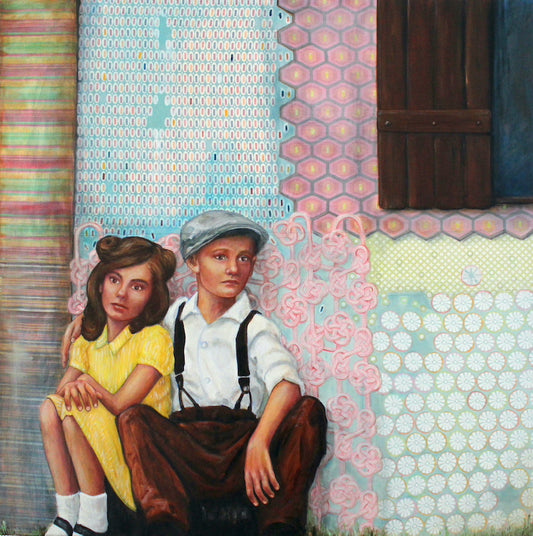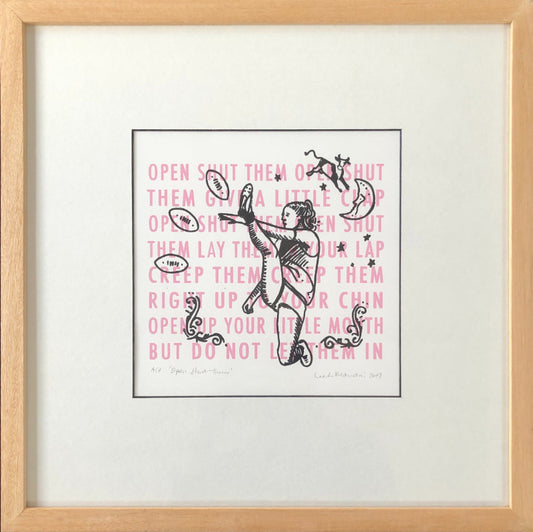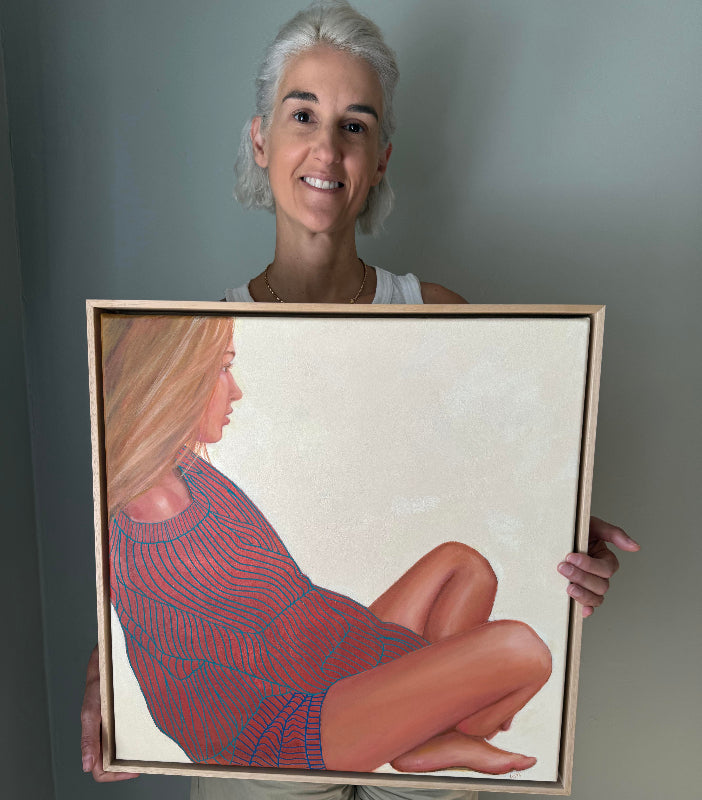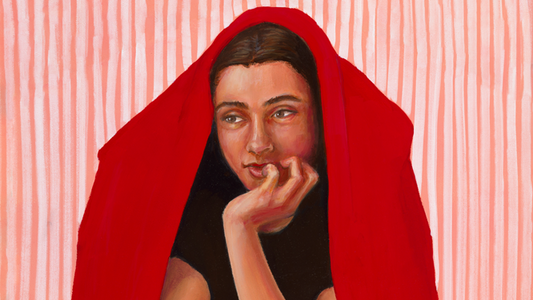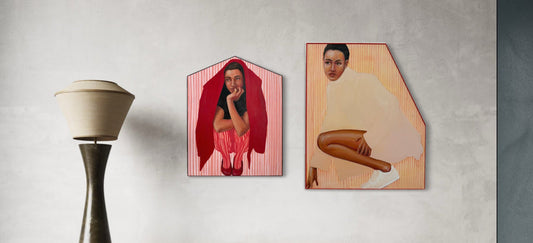
The Story Behind the Happily Ever After Art Series
Dear Prince Charming, where did you go?
Are you busy traveling the globe
while I wait here patiently, growing old,
investing in my ever-expanding wardrobe?
My fragile glass slippers are not very sturdy
So I can only sit here quietly, trying not to get dirty
Perhaps I’ll trade them for boots made for walking,
And set off on my own story-worthy journey
Rewriting the Narrative: A Feminist Reimagining of Fairy Tales
Fairy tales have always had the power to captivate our imagination and evoke our deepest fears. I've long been fascinated by the narratives we pass on to our children and the gendered messages embedded within these timeless stories. In my art series, 'Happily Ever After', I bring female characters to the centre of their own narratives. Drawing inspiration from classic fairy tales, I subvert traditional tropes to empower these women, portraying them not as passive figures but as agents of their own destinies. This body of work explores recurring themes, including rebellion, ambition, wisdom, and solidarity, all through a feminist lens. It questions our traditional understanding of what a happy ending for women looks like.
I reimagine stories like Snow White, Sleeping Beauty, Cinderella, The Little Mermaid, Rapunzel, Hansel and Gretel, and even Little Red Riding Hood to challenge outdated paradigms and offer a fresh perspective—one where women take the lead.
Snow White & Sleeping Beauty: Dreaming Without Consent
These tales normalize the idea of men falling in love with unconscious women. If submissive princesses are all the rage, then you can't get more passive than these princesses. Both Snow White and Sleeping Beauty are sexually assaulted while asleep, only to wake up and marry their assailants. It’s the epitome of passivity—princesses so submissive they’re practically dead. In my work, I remove the prince from the frame, reclaiming these stories as spaces where women exist on their own terms.
Image below: Snow White original painting by Leah Mariani
Cinderella: Her Own Saviour
The story of Cinderella combines the popular rags-to-riches tale with the classic makeover trope. The makeover storyline occurs when the unassuming lead female character undergoes a radical, yet superficial, physical transformation involving makeup, new clothes, and a visit to the hairdresser, which suddenly makes her undeniably attractive. Cinderella’s makeover (like Pretty Woman’s Vivian) is superficial. It’s her physical transformation that earns the prince’s affection, not her character. In my depiction, Cinderella appears as a young girl looking at a mirror image of herself. No prince in sight—just a girl who saves herself.
Image below: Handle with Care, original painting by Leah Mariani
The Little Mermaid: Finding Her Voice
The Little Mermaid is a moral tale, the meaning of which has changed over time. Hans Christian Andersen’s original tale was a moral lesson in submission: Ariel is tricked into giving up her voice, fails to win the prince, and must do 300 years of invisible good deeds to earn salvation. The moral lesson here is to never dream of a better life. Women are to accept what they have and not wish for more.
In Disney’s less depressing version, The Little Mermaid gets the Handsome Prince in the end. Throughout her journey, she is accompanied by a little male fish called Flounder, who acts as an ineffectual chaperone (like Olaf in Frozen) instead of a parent. Ariel does not have a mother, aunt, or even a female friend who can offer useful advice. She is just another lonely Princess surrounded by males and jealous older women.
My version restores her voice through the rhyme She Sells Sea Shells, which nods to Mary Anning, a brilliant but unrecognized female fossil hunter. Both figures seek agency in a male-dominated world.
Image below: She Sells Sea Shells handmade screenprint by Leah Mariani
Rapunzel: Escaping Together
Rapunzel is one of many 'woman trapped in the tower' stories, which may have originated from the story of Danae in Greek mythology. Rapunzel is also another imprisoned heroine rescued by a man. But in my work, she gets a sister, not a prince. The two women help each other escape, symbolizing the strength found in female solidarity. Extra hair means double the rope.
Image below: Rupunzel's Sister, original painting by Leah Mariani
Hansel and Gretel: Survival and Stereotypes
In place of a loving mother, the siblings have an evil stepmother who asks their hapless (and blameless) father to abandon the children in the woods. This story mirrors many fairy tale tropes: an absent mother, a weak father, and an evil older woman. Though it’s Hansel who ultimately rescues Gretel, I question why the sister couldn’t save them both. My art explores a more balanced dynamic—one that honours the contributions and strengths of both children.
Image below: Hansel and Gretel original painting by Leah Mariani
I couldn’t bring myself to depict Beauty and the Beast. Even as a child, I sensed the coercive control at the heart of Belle’s relationship with the Beast. Instead, I reimagine Belle as Little Red Riding Hood. Here, she tames the wolf, not into a man, but into a dog. The danger is neutralized, not romanticized.

Across this series, core themes emerge, including the rebellious Princess (no damsels in distress here!) and Sisterhood (women supporting women). Fairy tales have long reflected the fears and values of their times. By revisiting them through a feminist lens, I challenge the old narratives and invite viewers to imagine new ones. In my world, the princesses rescue themselves—and each other. These are not just reimaginings; they are acts of reclamation.
Image below: Little Red iPhone Cover








